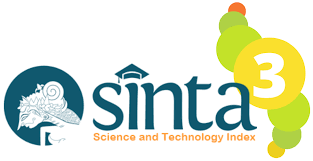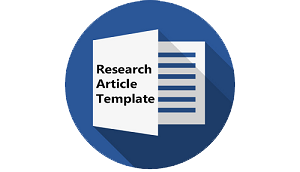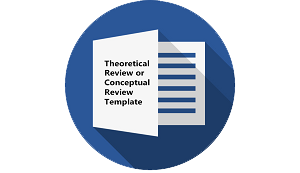Kajian Fonologis Kesalahan Sistematis pada Presentasi Makalah Mahasiswa Universitas Mataram
DOI:
https://doi.org/10.30957/lingua.v17i1.690Keywords:
systematic error, font, systematic error symptomsAbstract
This article is entitled "Systematic Errors in Speech Production in the Presentation of Papers of the Indonesian Language and Literature Education Study Program, Mataram University (Phonological Studies). "The problem of this research is how are the forms of systematic errors in speech production and symptoms of systematic errors in speech production (phonological studies) that are found? The method of determining the research subject was carried out by determining the population of all PBSI Unram semester III students of 4 classes. The sample is regular morning class students, namely class III C and III D. Class III C consists of 40 students with details of 19 male and 21 female, while Class III D consists of 43 students with details of 20 male and 23 female. By using a purposive sampling technique. Data collection methods are observation and listening. Based on the data analysis, the conclusions were obtained: that was found a form of systematic error in fonts. The form of a systematic error in speech production namely changing the font by 13 words, removing the font by 12 words, adding the font by 3 words. Of the three forms of systematic font error, the data that many researchers found changed in the font. The researcher did not find any systematic errors in the phoneme form. NextThe symptom of systematic error in speech production (phonological study) with the most intense was the symptom of anaptyxis error of 5 words and the symptom of dissimilation error of 5 words.
Downloads
References
Arikundo, Suharsimi. 2010. Prosedur Penelitian Suatu Pendekatan Praktik. Jakarta: Rineka Cipta.
Arifin, E. Zaenal & S. Amran Tasae.2000. Cermat Berbahasa Indonesia. Jakarta: Akademi Presindo.
Arifuddin, 2013. Neuropsikolinguistik. Jakarta: Rajawali pers.
Behrman, Richard. 2004. Immunophenotyping in leukimia and its diagnostic significnce. Medical Journal of Indonesia.Volume 13. Number 3: july-september 2004: pp 133-202.
Chaer, A. 2009. Fonologi Bahasa Indonesia. Jakarta: Rineka Cipta.
Departemen Pendidikan Nasional. 2002. Kamus Besar Bahasa Indonesia. Jakarta: Balai Pustaka.
Endarmoko, E. 2006. Tesaurus Bahasa Indonesia. Jakarta: Gramedia Pustaka Utama.
Mahsun. 2005. Metode Penelitian Bahasa. Jakarta: PT Raja Grafindo Persada.
Mahsun. 2017. Metode Penelitian Bahasa: Tahapan Strategi, Metode, dan Tekninya. Depok: Rajawali Pers.
Muslich, M. 2010. Fonologi bahasa Indonesia: Tinjauan deskriptif sistem bunyi bahasa Indonesia. Jakarta: Bumi Aksara.
Muslich, M. 2012. Fonologi Bahasa Indonesia. Jakarta: Bumi Aksara.
Ramlan. 2009. Morfologi Suatu Tinjauan Deskriptif. Yogyakarta: Karyono.
Rahman, H. 2013. Analisis Tindak Bahasa Campur Kode Di Pasar Labuhan Sumbawa Pendekatan Sosiolinguistik. Skripsi-FKIP: Universitas Muhammadiyah Mataram.
Ridwan. 2005. Pengantar Statistika Untuk Penelitian Pendidikan, Sosial, Ekonomi, Komunikasi dan Bisnis. Bandung: Alfabeta.
Setyawati, N. 2010.Analisis Kesalahan Berbahasa Indonesia: Teori dan Praktik. Surakarta: Yuma Pustaka.
Sukardi. 2010. Metodologi Penelitian Pendidikan. Jakarta: Bumi Aksara.
Tarigan, H. G. 2011. Pengajaran Pemerolehan Bahasa. Bandung: Angkasa Bandung.
Titik, T & Djoko K. 2004. Pengembangan Kepribadian Sekretaris. Jakarta: Gramedia.
Downloads
Published
How to Cite
Issue
Section
License
Authors who publish with this journal agree to the following terms:
- Authors retain copyright and grant the journal right of first publication with the work simultaneously licensed under a Creative Commons Attribution-ShareAlike 4.0 International License that allows others to share the work with an acknowledgement of the work's authorship and initial publication in this journal.
- Authors are able to enter into separate, additional contractual arrangements for the non-exclusive distribution of the journal's published version of the work (e.g., post it to an institutional repository or publish it in a book), with an acknowledgement of its initial publication in this journal.
- Authors are permitted and encouraged to post their work online (e.g., in institutional repositories or on their website) prior to and during the submission process, as it can lead to productive exchanges, as well as earlier and greater citation of published work (See The Effect of Open Access).















